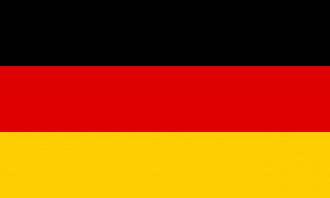German authorities consider the local Aerospace and Defence (A&D) industry, to be of strategic importance for the enactment of the country’s foreign and security policies, as it has developed into a powerful strategic enabler, to this end. Additionally, the German defence industry is both economically and technologically successful, as it is capable of fulfilling both domestic, as well as export requirements. Germany exhibits a highly mature A&D sector, capable of producing a wide range of products, from logistic, utility and armoured vehicles through to Main Battle Tanks (MBT), combat and transport aircraft, aero-engines, satellites, helicopters, unmanned aerial vehicles, missile systems, sensors, landing gear and flight control computers, to name a few.
There are relatively few German companies solely involved in arms production, as for the majority of such companies, defence sales are a smaller part of their overall sales. Nevertheless, there are some such companies that have experienced an increase in their arms sales over the past few years.
Rheinmetall and Krauss-Maffei Wegmann are two of these companies. According to the SIPRI database of the Top 100 arms-producing and military services companies in the world, in 2014, military sales of Rheinmetall and Krauss-Maffei Wegman represented 48% and 95% of their total sales, respectively. In contrast, Thyssen-Krupp’s arms’ sales represented only 3% of its total sales.
Krauss-Maffei Wegmann (KMV) is one of the leading companies in Europe for highly protected wheeled and tracked vehicles. The armed forces of more than 50 nations worldwide rely on tactical systems developed by KMW. The diverse products’ portfolio of KMV includes among others, armoured wheeled vehicles, reconnaissance, anti-aircraft and artillery systems, Main Battle Tanks (MBT), Infantry Fighting Vehicles (IFV) and bridge-laying systems. On the other hand, Rheinmetall’s products’ portfolio includes vehicles, force protection and weapon systems, infantry equipment, air defence assets, network-enabled warfare capabilities, electro-optics and simulation technology. Finally, Thyssen-Krupp, mainly develops ships, submarines and related equipment. Thyssen-Krupp submarines have sold to several countries around the world, such as Israel, South Korea, Turkey and Greece.
The aerospace sector of the German A&D industry, performed remarkably well in 2015, as total sales reached an all-time high of 34.7 billion Euros (the equivalent sales for 2014 amounted to 32.1 billion Euros). Additionally, some 106,800 workers were directly employed by the German aerospace industry in 2015. It is also worth noting that the industry‘s investments in Research and Development (R&D) in the same year, reached some 4.2 billion Euros.
Regarding the civil aviation segment of the German aerospace industry, sales in 2015 rose by 11% compared to 2014, reaching 25.3 billion Euros and representing 73% of the total aerospace industry sales. The 75,000 people working in the civil aviation segment, represent a small increase in personnel of about 1%, compared to 2014. Sales of the military aviation segment, rose by 3%, reaching the 6.8 billion Euros mark, while some 23,000 employees overall were employed in related activities. Finally, the space sector of the German aerospace industry, generated sales revenues of 2.5 billion Euros and provided jobs to 8,500 people during the same year.
As was already mentioned, being able to count on a reliable and highly capable A&D industry, is of outmost importance for Germany, since it is essential for the nation’s Armed Forces to be equipped with a modern inventory, which will enable them in turn to efficiently fulfil the tasks they are charged with, in the high-complexity modern battlefield environment. In order to achieve this, the country’s federal government is to allocate around 152 million euros to the German Aerospace Centre (DLR), for the promotion of research activities within the aerospace sector, during 2017. More on that, up to 134 million euros will be provided over the next few years, for funding new research projects for civil aviation applications, while a total of 1.42 billion euros (including the institutional funding for the DLR) will be made available for space research in 2017 (of this amount, 755 million euros is the budget for international cooperation within the European Space Agency (ESA)).
Finally, in the frame of the promotion of integration of its defence strategy with those of the EU and NATO, as discussed above, Nexter Systems (of France) and Krauss-Maffei Wegmann (KMW), have completed their association on the 15th of December 2015. As a result, two of the leading European manufacturers of military land systems, will operate jointly under the umbrella of a holding company, under Dutch law, with headquarters in Amsterdam.
In past years, Germany participated to several common EU military platforms’ development programmes, such as the Eurofighter Typhoon fighter aircraft, which is a collaborative effort of the UK, Germany, Italy and Spain. More on that, Germany has taken part in several projects of the Organisation for Joint Armament Cooperation (OCCAR), such as the A400M transport aircraft, the Tiger attack helicopters and the Boxer 8x8 all terrain heavily-armoured utility vehicle. The success of the latter programme was further reinforced, when Lithuania joined the launch nations of the programme (namely Germany and the Netherlands), in August of 2016, with the intention to procure 88 BOXER, in an Infantry Fighting Vehicle version.


